8 /10 1 Votes
7.7/10 MyAnimeList Music by Hiroshi Miyagawa Final episode date 30 March 1975 | 8.1/10 IMDb First episode date 6 October 1974 | |||||||||||||||||||||||||||||||||
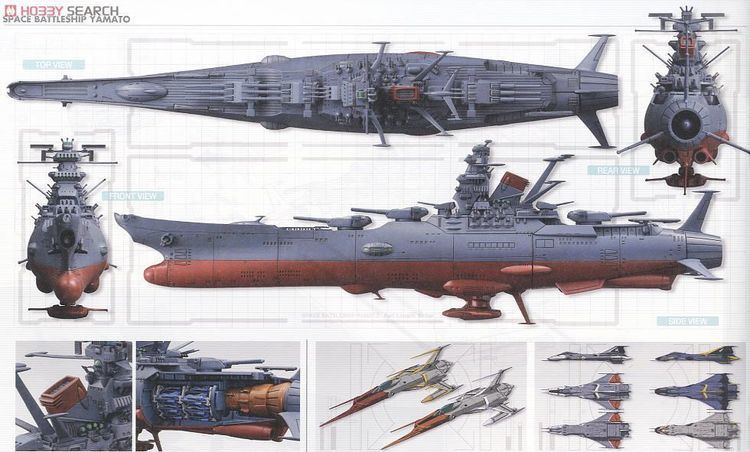 | ||||||||||||||||||||||||||||||||||
Cast Kei Tomiyama, Masatō Ibu, Akira Kamiya, Yōko Asagami Characters Yuki Mori, Susumu Kodai, Juzo Okita, Starsha, Akira Yamamoto Similar The Super Dimension Fortress, Wakusei Robo Danguar, Groizer X, Chōdenji Robo Combattl, Starzinger | ||||||||||||||||||||||||||||||||||
Space Battleship Yamato (Japanese: 宇宙戦艦ヤマト, Hepburn: Uchū Senkan Yamato, also called Cosmoship Yamato) is a Japanese science fiction anime series featuring an eponymous spacecraft. It is also known to English-speaking audiences as Space Cruiser Yamato; an English-dubbed version of the series was broadcast on North American and Australian television as Star Blazers. The first two seasons ("The Quest for Iscandar" and "The Comet Empire") of this version were broadcast in Greece in 1981–82 as Διαστημόπλοιο Αργώ ("Spaceship Argo"). An Italian-language version was also broadcast under the name Star Blazers in Italy, and a Portuguese-language version was successfully shown in Brazil under the title Patrulha Estelar ("Star Patrol"), Viaje a la Ultima Galaxia ("Voyage to the Final Galaxy") or Astronave Intrepido ("Starship Intrepid") in Spain and Latin America, a version called Stjärnbrigaden ("Star Brigade") was released in Sweden, and Nusoor Al Fada'a ("Space Eagles") in the Arabic version.
Contents
- Space battleship yamato 2199 anime review animeeveryday anime reviews
- Development
- Plot
- Movie edition
- Fictional chronology
- Farewell to Space Battleship Yamato 1978
- Space Battleship Yamato II 1978
- Yamato The New Voyage 1979
- Be Forever Yamato 1980
- Space Battleship Yamato III 1980
- Final Yamato 1983
- Yamato 2520 1994
- Space Battleship Great Yamato 2000
- New Space Battleship Yamato 2004 cancelled
- Great Yamato No Zero 2004
- Yamato Resurrection 2009
- Live action film 2010
- Yamato 2199 2012
- Timelines
- Space Battleship Yamato arcade game
- Characters
- English title
- References
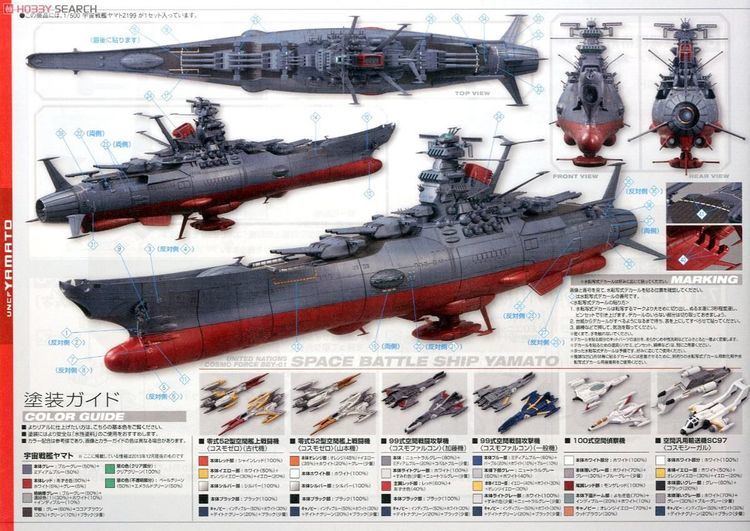
It is a seminal series in the history of anime, marking a turn towards more complex serious works and influencing works such as Mobile Suit Gundam, Neon Genesis Evangelion or SDF Macross. Hideaki Anno has ranked Yamato his favorite anime and credited it with sparking his interest in anime.
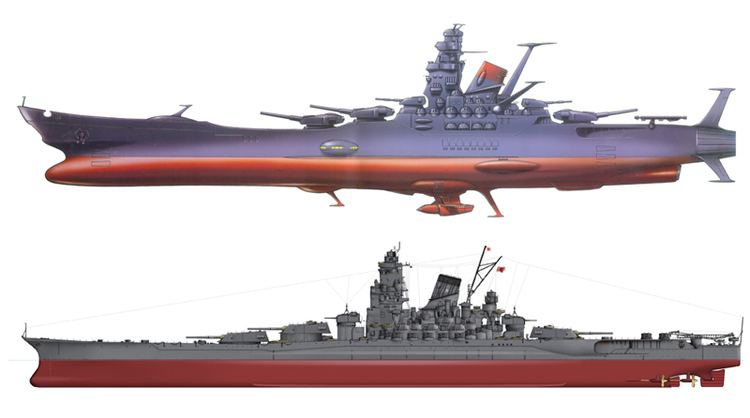
Yamato was the first anime series or movie to win the Seiun Award, a feat not repeated until the film Nausicaä of the Valley of the Wind (1984).
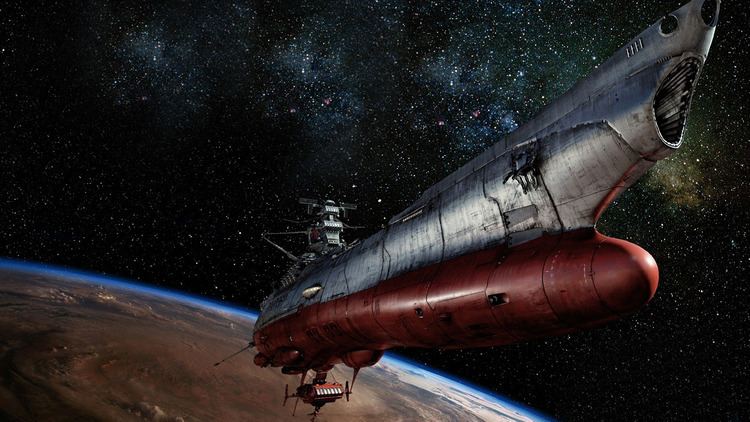
Space battleship yamato 2199 anime review animeeveryday anime reviews
Development
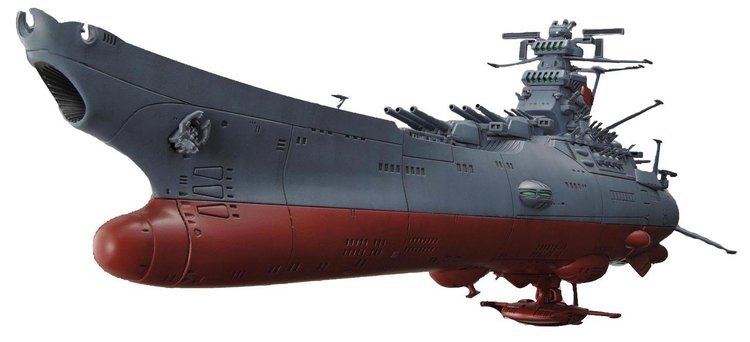
Conceived in 1973 by producer Yoshinobu Nishizaki, the project underwent heavy revisions. Originally intended to be an outer-space variation on Lord of the Flies, the project at first was titled "Asteroid Ship Icarus" and had a multinational teenage crew journeying through space in a hollowed-out asteroid in search of the planet Iscandar. There was to be much discord among the crew; many of them acting purely out of self-interest and for personal gain. The enemy aliens were originally called Rajendora.
When Leiji Matsumoto was brought onto the project, many of these concepts were discarded. It is his art direction, ship designs and unique style that accredit him in fans' eyes as the true creator of Space Battleship Yamato, even though Nishizaki retains legal rights to the work.
Plot
For more information about the spaceship, see Space Battleship Yamato (fictional spacecraft).Set in the year 2199, an alien race known as the "Gamilas" ("Gamilons" in the English Star Blazers dub) unleash radioactive meteorite bombs on Earth, rendering the planet's surface uninhabitable. Humanity has retreated into deep underground cities, but the radioactivity is slowly affecting them as well, with humanity's extinction estimated in one year. Earth's space fleet is hopelessly outclassed by the Gamilas and all seems lost until a message capsule from a mysterious crashed spaceship is retrieved on Mars. The capsule yields blueprints for a faster-than-light engine and an offering of help from Queen Starsha of the planet Iscandar in the Large Magellanic Cloud. She says that her planet has a device, the Cosmo-Cleaner D (Cosmo DNA), which can cleanse Earth of its radiation damage.
The inhabitants of Earth secretly build a massive spaceship inside the ruins of the gigantic Japanese battleship Yamato which lies exposed at the former bottom of the ocean location where she was sunk in World War II. This becomes the "Space Battleship Yamato" for which the story is titled. Using Starsha's blueprints, they equip the new ship with a space warp drive, called the "wave motion engine", and a new, incredibly powerful weapon at the bow called the "Wave Motion Gun". The Wave Motion Engine (波動エンジン, hadō enjin) is capable of converting the vacuum of space into tachyon energy, as well as functioning like a normal rocket engine, and providing essentially infinite power to the ship, it enables the Yamato to "ride" the wave of tachyons and travel faster than light. The Wave Motion Gun (波動砲, hadō hō), also called the Dimensional Wave Motion Explosive Compression Emitter, is the "trump card" of the Yamato that functions by connecting the Wave Motion Engine to the enormous firing gate at the ship's bow, enabling the tachyon energy power of the engine to be fired in a stream directly forwards. Enormously powerful, it can vaporize a fleet of enemy ships—or a small continent (as seen in the first season, fifth episode)—with one shot; however, it takes a brief but critical period to charge before firing.
In the English Star Blazers dub, the ship is noted as being the historical Yamato, but is then renamed the Argo (after the ship of Jason and the Argonauts). A crew of 114 departs for Iscandar in the Yamato to retrieve the radiation-removing device and return to Earth within the one-year deadline. Along the way, they discover the motives of their blue-skinned adversaries: the planet Gamilas, sister planet to Iscandar, is dying; and its leader, Lord Desslar ("Desslok" in the Star Blazers dub), is trying to irradiate Earth enough for his people to move there, at the expense of the "barbarians" he considers humanity to be.
The first season contained 26 episodes, following the Yamato's voyage out of the Milky Way Galaxy and back again. A continuing story, it features the declining health of Yamato's Captain Okita (Avatar in the Star Blazers dub), and the transformation of the brash young orphan Susumu Kodai (Derek Wildstar) into a mature officer, as well as his budding romance with female crewmember Yuki Mori (Nova Forrester). The foreign edits tend to play up the individual characters, while the Japanese original is often more focused on the ship itself. In a speech at the 1995 Anime Expo, series episode director Noboru Ishiguro said low ratings and high production expenses forced producer Yoshinobu Nishizaki to trim down the episode count from the original 39 episodes to only 26. The 13 episodes would have introduced Captain Harlock as a new series character.
Movie edition
The series was condensed into a 130-minute-long movie by combining elements from a few key episodes of the first season. Additional animation was created for the movie (such as the scenes on Iscandar) or recycled from the series' test footage (such as the opening sequence). The movie, which was released in Japan on August 6, 1977, was edited down further and dubbed into English in 1978; entitled Space Cruiser Yamato or simply Space Cruiser, it was only given a limited theatrical release in Europe & Latin America, where it was called Patrulha Estelar (Star Patrol, in Brazilian Portuguese) or Astronave Intrepido (Starship Intrepid, in Spanish), though it was later released on video in most countries.
Fictional chronology
Farewell to Space Battleship Yamato (1978)
The success of the Yamato movie in Japan eclipsed that of the local release of Star Wars, leading to the production of a second movie that would end the story. Also going by the name Arrivederci Yamato, Farewell to Space Battleship Yamato, set in the year 2201, shows the Yamato crew going up against the White Comet Empire, a mobile city fortress called Gatlantis, from the Andromeda Galaxy. A titanic space battle results in the crew going out on a suicide mission to save humanity. The film has been considered as a non-canonical, alternate timeline.
Space Battleship Yamato II (1978)
Viewer dissatisfaction with the ending of Farewell to Space Battleship Yamato prompted the production of a second Yamato television season which retconned the film and presented a slightly different plot against Zōdah (Prince Zordar in the Star Blazers dub) and his Comet Empire, and ended without killing off the Yamato or its primary characters. Like Farewell, the story is set in the year 2201, and expands the film story to 26 episodes. This second season featured additional plots such as a love story between Teresa (Trelaina) and Yamato crew member Daisuke Shima (Mark Venture), and an onboard antagonism between Kodai and Saito (Knox), leader of a group of space marines.
Footage from Farewell to Space Battleship Yamato was reused in the second season, particularly in the opening titles. The sequence of the Yamato launching from water was also reused in two of the subsequent movies.
Yamato: The New Voyage (1979)
The television movie Yamato: The New Voyage (aka Yamato: The New Journey), came next, featuring a new enemy, the Black Nebula Empire. The story opens in late 2201. In the film, later modified into a theatrical movie, Desslar sees his homeworld, Gamilas, destroyed by the grey-skinned aliens, and its twin planet Iscandar next in line for invasion. He finds an eventual ally in the Yamato, then on a training mission under deputy captain Kodai.
Be Forever Yamato (1980)
The theatrical movie Be Forever Yamato, set in the year 2202, sees the Black Nebula Empire launch a powerful weapon at Earth, a hyperon bomb which will annihilate humanity if they resist a full-scale invasion. The Yamato, under new captain, Yamanami, travels to the aliens' home galaxy only to discover what appears to be a future Earth—defeated and ruled by the enemy. Appearing in this film is Sasha, the daughter of Queen Starsha of Iscandar and Mamoru Kodai (Susumu's older brother).
Space Battleship Yamato III (1980)
Following these movies, a third season of the television series was produced, broadcast on Japanese television in 1980. Its date was not mentioned in the broadcast, but design documents, as well as anime industry publications, cited the year 2205. In the story, the Sun is hit by a stray proton missile from a nearby battle between forces of the Galman Empire and Bolar Federation. This missile greatly accelerates nuclear fusion in the Sun, and humanity must either evacuate to a new home or find a means of preventing a supernova. During the course of the story, it is learned that the people of the Galman Empire are actually the forebears of Desslar and the Gamilas race. Desslar and the remnants of his space fleet have found and liberated Galman from the Bolar Federation. Originally conceived as a 52-episode story, funding cuts meant the season had to be truncated to 25 episodes, with a corresponding loss of overall story development. This third season was adapted into English several years after the original Star Blazers run and, to the dissatisfaction of fans, used different voice actors than did the earlier seasons.
Final Yamato (1983)
Premiering in Japanese theaters on March 19, 1983, Final Yamato reunites the crew one more time to combat the threat of the Denguilu, a militaristic alien civilization that intends to use the water planet, Aquarius, to flood Earth and resettle there (having lost their home planet to a galactic collision). Captain Okita, who was found to be in cryogenic sleep since the first season, returns to command the Yamato and sacrifices himself to stop the Denguili's plan. Susumu and Yuki also get married.
The story is set in the year 2203, contradicting earlier assumptions that its predecessor, Yamato III, took place in 2205. Having a running time of 165 minutes, Final Yamato holds the record of being the Japanese longest animated film ever made, a record which has yet to be surpassed as of 2017.
Yamato 2520 (1994)
In the mid-1990s, Nishizaki attempted to create a sequel to Yamato, set hundreds of years after the original. Yamato 2520 was to chronicle the adventures of the eighteenth starship to bear the name, and its battle against the Seiren Federation. Much of the continuity established in the original series (including the destruction of Earth's moon) is ignored in this sequel.
In place of Leiji Matsumoto, American artist Syd Mead (∀ Gundam, Blade Runner, Tron and Star Trek: The Motion Picture) provided the conceptual art.
Due to the bankruptcy of Nishizaki's company Office Academy (former Academy Productions), and legal disputes with Matsumoto over the ownership of the Yamato copyrights, the series was never finished and only three episodes were produced.
Space Battleship Great Yamato (2000)
Space Battleship Great Yamato (新宇宙戦艦ヤマト, Shin Uchū Senkan Yamato, lit. "New Space Battleship Yamato") is a graphic novel comic created by the animator Leiji Matsumoto. For a time it was streaming online. However this has since stopped.
New Space Battleship Yamato (2004, cancelled)
In March 2002, a Tokyo court ruled that Yoshinobu Nishizaki legally owned the Yamato copyrights. Nishizaki and Matsumoto eventually settled, and Nishizaki pushed ahead with developing a new Yamato television series. Project proposals for a 26-episode television series were drawn up in early 2004, but no further work was done with Tohoku Shinsha not backing the project. American series expert Tim Eldred was able to secure a complete package of art, mecha designs, and story outline at an auction over Japanese store Mandarake in April 2014.
Set 20 years after Final Yamato, the series would have shown Susumu Kodai leading a salvage operation for the remains of the Yamato. The ship is rebuilt as the Earth Defense Force builds a second Space Battleship Yamato to combat the Balbard Empire, an alien race that has erected a massive honeycombed cage called Ru Sak Gar, over Earth in a bid to stop the human race's spacefaring efforts. A feature film to be released after the series ended would have featured the original space battleship fighting the Balbards' attempt to launch a black hole at Earth. Kodai, Yuki, and Sanada are the only original series characters who would have returned in the series.
Great Yamato No. Zero (2004)
Great Yamato No. Zero (大ヤマト零号, Dai Yamato Zero-go) is the second original animated video based on Space Battleship Yamato
The story begins in 3199, when a mighty enemy attacks the Milky Way from a neighbouring galaxy, and defeats the Milky Way Alliance, reducing them to just six fleets. After the Alliance headquarters is destroyed, and when the collapse of the central Milky Way Alliance is imminent, the Great Yamato "Zero" embarks on a mission to assist the Milky Way Alliance in one last great battle.
Yamato: Resurrection (2009)
Although New Space Battleship Yamato was sent to the discard pile, Nishizaki began work on a new movie titled Yamato: Resurrection (宇宙戦艦ヤマト 復活篇 Uchū Senkan Yamato: Fukkatsu hen) (set after the original series), while Matsumoto planned a new Yamato series. However, additional legal conflicts stalled both projects until August 2008, when Nishizaki announced plans for the release of his film on December 12, 2009.
Set 17 years after the events of Final Yamato, Resurrection brings together some members of the Yamato crew, who lead Earth's inhabitants to resettle in a far-flung star system after a black hole is discovered, which will destroy the solar system in three months.
Live-action film (2010)
Released on December 1, 2010, Space Battleship Yamato is the franchise's first live-action film. Directed by Takashi Yamazaki, the movie stars Takuya Kimura as Susumu Kodai and Meisa Kuroki as Yuki. It was revealed originally that the plot would be based on that of the 1974 series. However, an official trailer released during June 2010 on Japanese television has also shown elements from the series' second season (1978).
Yamato 2199 (2012)
Debuting in Japanese cinemas on April 7, 2012, 2199 is a remake of the 1974 series. Yutaka Izubuchi serves as supervising director, with character designs by Nobuteru Yuki, and Junichiro Tamamori and Makoto Kobayashi in charge of mecha and conceptual designs. The series is a joint project of Enagio, Xebec and AIC. Hideaki Anno designed the new series' opening sequence.
Timeline(s)
With the retelling of Arrivederci Yamato as the open-ended Yamato II television series (ending in late 2201), Arrivederci Yamato was redesignated as a discardable, alternate timeline. The follow-on film, Yamato: New Journey, took place in late 2201; and its successor, Be Forever Yamato, in early 2202. Yamato III was commonly believed to be set in 2205 (several printed publications used this date, although it was never stated in the show's broadcast). But the following film, Final Yamato, was set in 2203. The opening narration of Final mentioned the Bolar/Galman conflict, implying that the date for Yamato III was to be regarded as some time between 2202 and 2203 (making for an unrealistic and compressed timeline).
It is not known if this change was due to the lackluster response to Yamato III, the production staff's dissatisfaction with the truncated series (additionally, Nishizaki and Matsumoto had limited involvement with it), or a mere oversight.
In 2220, the ship is rebuilt following the events of Final Yamato. The new captain of the ship is Susumu Kodai, who was the main character in the previous movies. This is canon, as it is set 17 years after Final Yamato. It is not known what happened between 2203 and 2220.
Space Battleship Yamato arcade game
Space Battleship Yamato was a 1985 Japanese exclusive Laserdisc video game designed by Taito which was based on the television series of the same name.
Characters
The Space Battleship Yamato series generally involves themes of brave sacrifice, noble enemies, and respect for heroes lost in the line of duty. This can be seen as early as the second episode of the first season, which recounts the defeat of the original battleship Yamato while sailors and pilots from both sides salute her as she sinks (this scene was cut from the English dub, but later included on the Star Blazers DVD release). The movies spend much time showing the crew visiting monuments to previous missions and recalling the bravery of their fallen comrades. Desslar, the enemy defeated in the first season and left without a home or a people, recognizes that his foes are fighting for the same things he fought for and, eventually, becomes Earth's most important ally.
English title
For many years, English-language releases of the anime bore the title Space Cruiser Yamato. This romanization has appeared in Japanese publications because Nishizaki, a sailing enthusiast who owned a cruiser yacht, ordered that this translation be used out of love for his boat. However, in reference to naval nomenclature, it is technically inaccurate, as 戦艦 senkan means "battleship" and not "cruiser" (which in Japanese would be 巡洋艦 jun'yōkan). Leiji Matsumoto's manga adaptation was titled Cosmoship Yamato. Today, Yamato releases, including the Voyager Entertainment DVD, are marketed either as Star Blazers or Space Battleship Yamato.
Star Blazers (1979) is a heavily edited dubbed version for the United States market produced by Westchester Film Corporation. Voyager Entertainment released DVD volumes and comic adaptations of the anime years later.
